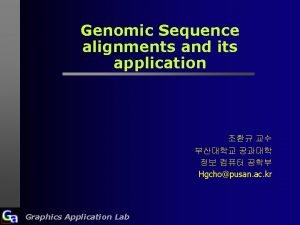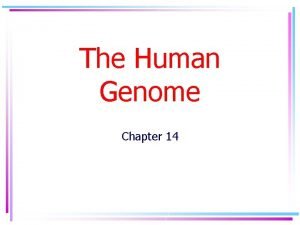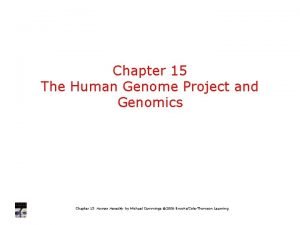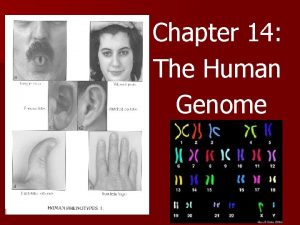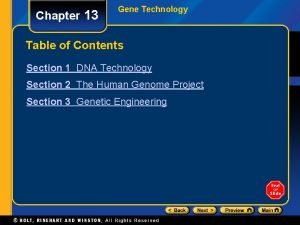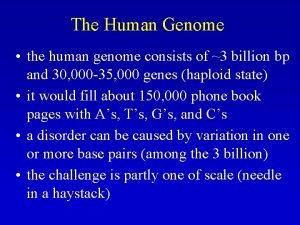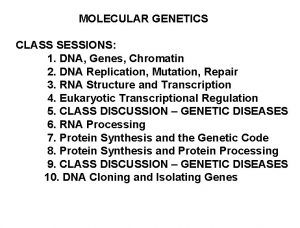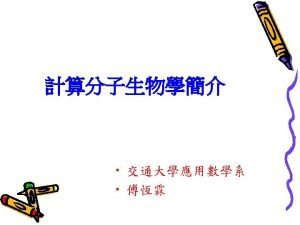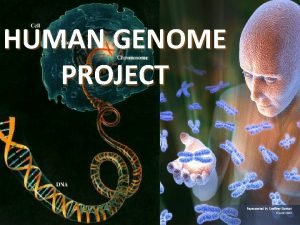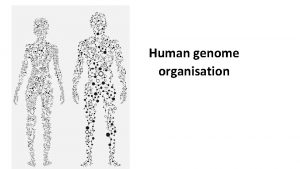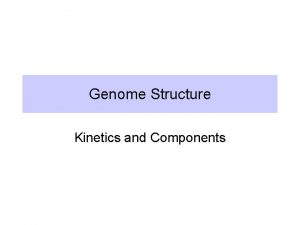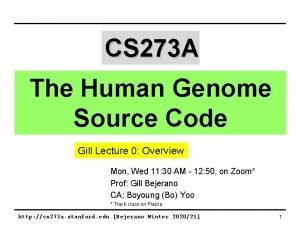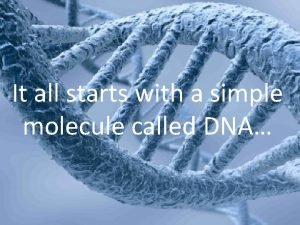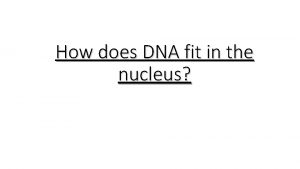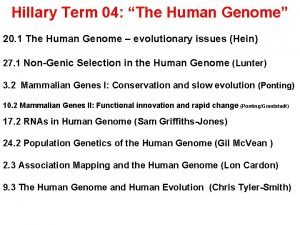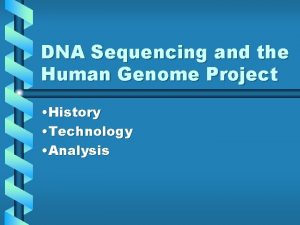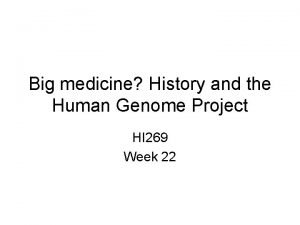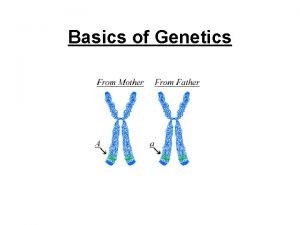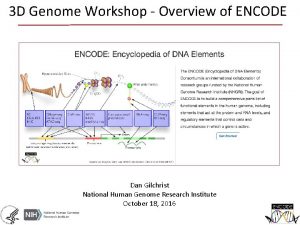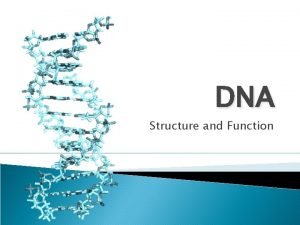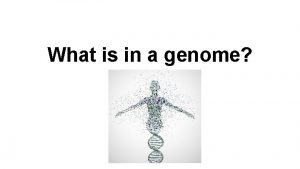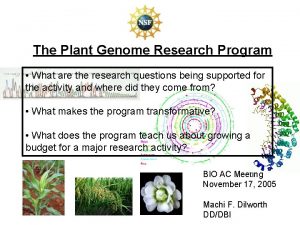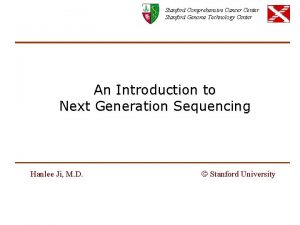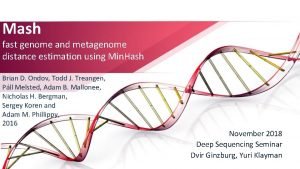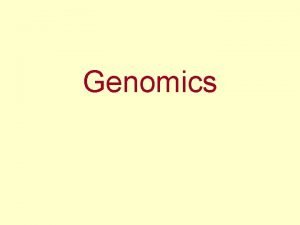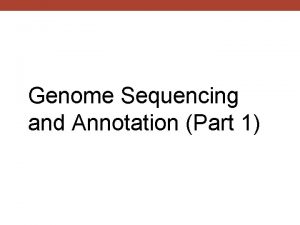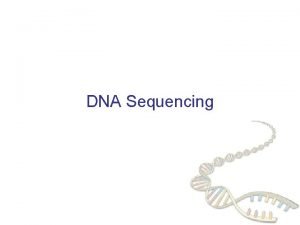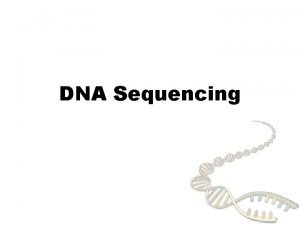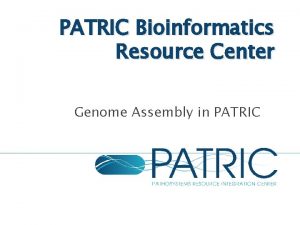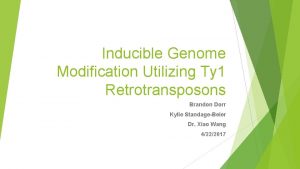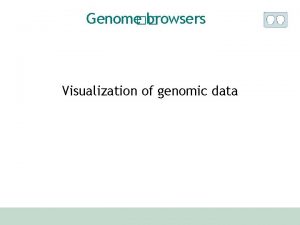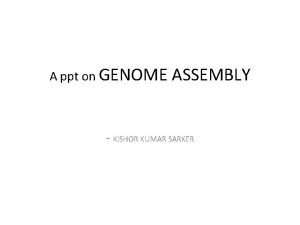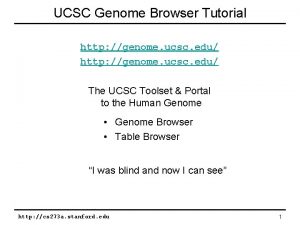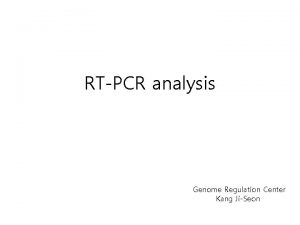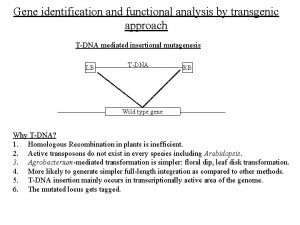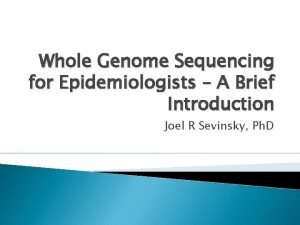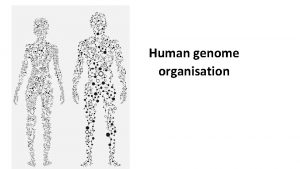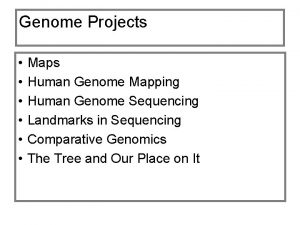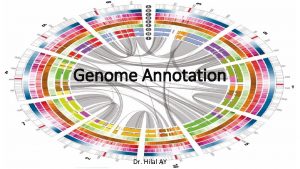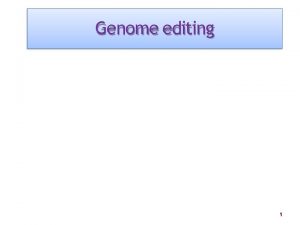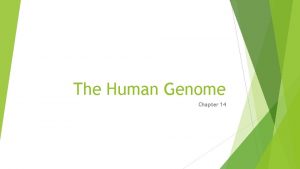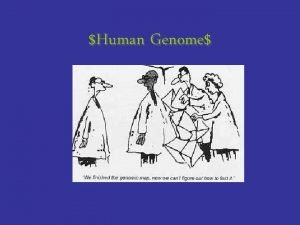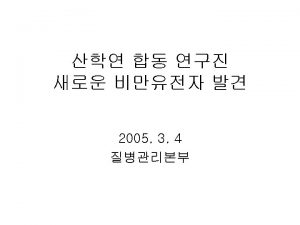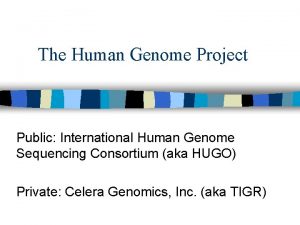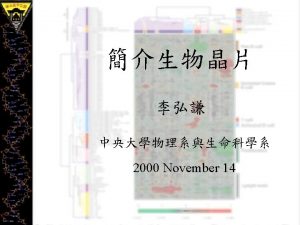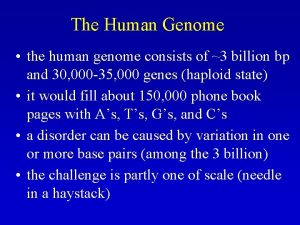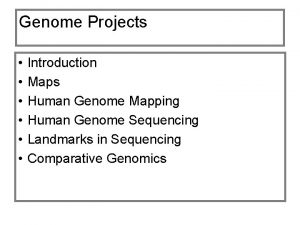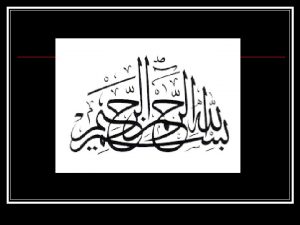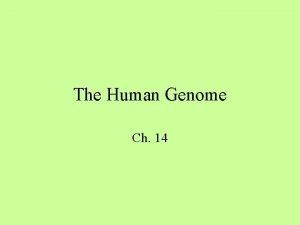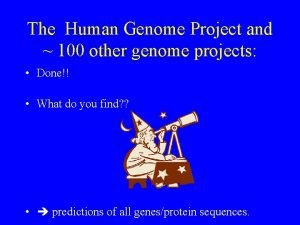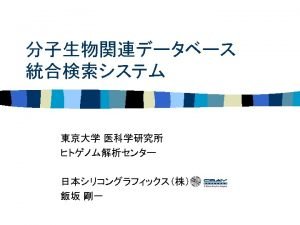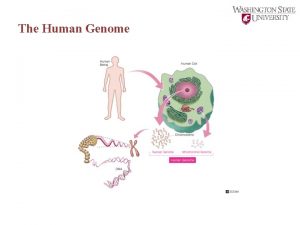Chapter 14 The Human Genome 14 1 Human




































- Slides: 36

Chapter 14: The Human Genome

14 -1 Human Heredity n How many chromosomes does an adult human cell contain? n Autosomes – any chromosomes that are not sex chromosomes. n Sex Chromosomes – X and Y – determine sex of individual.

14 -1 Human Heredity n Notations used to describe individuals n Normal Individuals represented as n Males 46, XY n Females 46, XX

Human Cell 22 pairs of homologous chromosomes – called autosomes n 1 pair of sex chromosomes – 23 rd pair n Gametes What sex chromosomes are carried by egg and sperm cells? – N chromosomes – egg only carries an X – sperm carries an X or Y

ID-ing Chromosomes n Chromosomes are identified by n 1. SIZE n 2. CENTROMERE LOCATION n 3. BANDING PATTERNS

n a picture of chromosomes n homologous chromosomes paired together. n What are they? Numbered 1 -22 in order of size n What is the 23 rd pair? n n What does the size of the chromosome indicate? Karyotype

Which of the karyotypes represent Normal Individuals?



CONCEPT CHECK n 1. Apr 28 What is an autosome? n 2. Explain the significance of the size of different chromosomes. n 3. Interpret the following notation. 45, XX

CONCEPT CHECK 1. Any one of the numbered chromosomes (1 -44) that are not sex chromosomes n 2. Chromosome size determines the numbers of genes within a chromosome. Larger chromosomes contain more genes and are most necessary for normal growth and development. n 3. 45, XX identifies the individual as a female having 45 n chromosomes. Missing an autosome Presence of a genetic disorder

Question of the DAY n Which statement is not true regarding homologous chromosomes? n A. Specific genes are found at the same loci n B. They have the same size n C. Genes will express identical traits n D. They are joined at the same centromere locations

Factors Affecting Phenotypes n Traits n Do are determined by our genes. other factors have an impact on our characteristics?

Genes and the Environment n All of our inherited characteristics are governed by our genes. – Many traits are polygenic. n Other factors influence our phenotypes. – Nutrition and Exercise n Average height has increased 10 cm in the last 200 years 3. 93 inches – U. S. and Europe

Alleles Figure 14 -6 n Dominant – Some genetic disorders are expressed through these alleles – Only requires one allele n Recessive – Most genetic disorders are transmitted through these alleles n Codominant – Sickle Cell Disease

Pedigree Analysis n rely on family histories and medical records to study humans n pedigree: diagram that follows the inheritance of a single trait through several generations

Pedigrees record and trace the occurrences of traits within a family.

British Royal Family

The Story of Anastasia

Concept Check May 3 n Explain why males cannot be carriers for sex-linked disorders. n Support your explanation with evidence.

14 -2: Sex-linked Inheritance sex determination – XX female – XY male n sex-linked genes: genes located on the sex chromosomes – almost always on the X chromosome – Y chromosome contains a few genes for male development n

Sex-linked Inheritance males inherit these disorder much more often gets passed from father to daughters, then daughters to their sons n examples are hemophilia, colorblindness, Duchenne’s muscular dystrophy n n

Human Genetic Disorders n autosomal genetic disorders – albinism § recessive allele on chromosome 11 § can’t produce melanin – cystic fibrosis § recessive allele on chromosome 7 § heavy mucus clogs lungs and breathing passageways

n tay sachs – recessive allele on chromosome 15 – suffer from breakdown of the nervous system n sickle cell disease – recessive allele on chromosome 11 – produces an alternate form of hemoglobin that causes the red blood cells to become a sickle shape – one DNA base changed – Glutamic acid for Valine

Sickle Cell Disease n Allele very prominent in African Americans – Carried by many individuals n Connected to malaria – a parasitic disease that affects red blood cells n Individuals who are heterozygous for sickle cell are resistant to malaria n When body destroys sickled cells, parasite causing malaria also destroyed. – Low oxygen = sickle shape = cells clump together

n PKU: phenylketonuria – recessive allele on chromosome 12 – causes mental retardation n Huntington’s disease – dominant allele on chromosome 4 – lose muscle control and nervous system breaks down

Chromosome Number Disorders n occurs by nondisjunction: when abnormal number of chromosomes are produced in the sex cells due to them not separating correctly

Turner’s Syndrome either a sperm or an egg is produced without a sex chromosome n XO genotype – O means sex chromosome is missing n sex organs are not fully developed n can not have children n only in females n

Klinefelter Syndrome n have an extra X chromosome – XXY genotype causes mental retardation n can not reproduce n only in males n

Down Syndrome n trisomy 21 – means 3 copies of chromosome #21 n causes heart and circulatory problems, mental retardation, and a weakened immune system

Other Causes of Disorders deletions: can occur from pieces of chromosomes breaking off and getting lost in meiosis n translocation: when pieces of chromosomes break off and become reattached to another n

Prenatal Diagnosis want to detect if unborn child will have a disorder n two ways – amniocentesis: withdraw fluid from sac around fetus – chorionic villus sampling: tissue surrounding fetus is removed and examined n

Special Topics in Human Genetics n n barr body: dense region in the nucleus of most cells in human females condensed turned-off X chromosome not found in males because their one X chromosome is active happens in some tissues and in some cells

14 -3 Testing for Alleles n DNA probes – specific DNA base sequences that detect the complementary base sequences found in disease causing alleles n Cystic Fibrosis and Tay Sachs are examples that use DNA probes.

DNA Fingerprinting n Repeats are specific sequences of DNA unique to every individual – Do not code for proteins n Repeats cut with restriction enzymes n Gel electrophoresis separates fragments n Labeled with radioactive probes n Forensics, detection of inherited diseases, and paternity cases

Human Genome Project n Sequencing of all of the genes within an organism. n Human genome sequencing completed in 2003. n Included sequencing of other organisms including E. coli, multiple strains of yeast, the fruit fly, the mosquito, the honey bee, the cow, the dog, the horse, and the rat.
 Semi-global alignment
Semi-global alignment Chapter 14 the human genome making karyotypes answer key
Chapter 14 the human genome making karyotypes answer key Chapter 15
Chapter 15 Chapter 14 the human genome
Chapter 14 the human genome Chapter 13 section 3 the human genome
Chapter 13 section 3 the human genome Euphenics
Euphenics Human genome size
Human genome size Human genome size
Human genome size Future of human genome project
Future of human genome project Vntrs vs strs
Vntrs vs strs Human genome structure
Human genome structure Human genome project source code
Human genome project source code National human genome research institute
National human genome research institute National human genome research institute
National human genome research institute Human genome project
Human genome project History of sequencing
History of sequencing Human genome project
Human genome project Turner syndrome
Turner syndrome National human genome research institute
National human genome research institute Section 14-3 human molecular genetics answer key
Section 14-3 human molecular genetics answer key What is a human genome
What is a human genome Genomics
Genomics Plant genome research program
Plant genome research program Stanford
Stanford Min-hash
Min-hash Pyrosequencing animation
Pyrosequencing animation Hierarchical shotgun sequencing vs whole genome
Hierarchical shotgun sequencing vs whole genome Hierarchical shotgun sequencing vs whole genome
Hierarchical shotgun sequencing vs whole genome Dna
Dna Patric bioinformatics
Patric bioinformatics Genome modification ustaz auni
Genome modification ustaz auni Genome klick
Genome klick Genome assembly and annotation ppt
Genome assembly and annotation ppt Genome.ucsc.edu tutorial
Genome.ucsc.edu tutorial Genome
Genome Functional dna
Functional dna Genome sequencing
Genome sequencing
